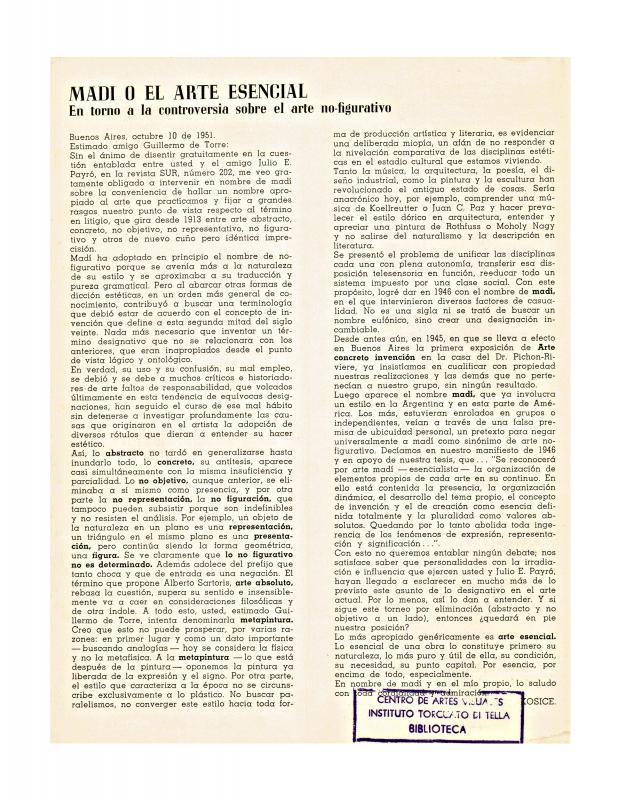In 1953, the year this manifesto was published, abstract art versus figurative art began to be strongly questioned, as well as Concrete art as well as discussions related to Concretism and intervention in the artistic practice incentivized by the MADI group polemics, an Argentinean group of artists. [Please refer to the ICAA digital archive and to the following text: “Madí o el arte esencial: en torno a la controversia sobre el arte no-figurativo” by Gyula Kosice (doc. no. 742696)]. At the same time, expressionist trends, that had brought a rise to “social realism” in previous decades, remained valid. In addition to this scenario, one can add the permanent dissatisfaction among the artists with the politically elected judges for official artistic competitions and exhibitions that were not considered sufficiently fair or eclectic enough.
Beginning in the 1950s, the lack of specialized art galleries and a market constituted as such, as well as the new doctrinal debates in aesthetics, combined with the decline of non-institutional spaces for exhibitions and public exchange, created a climate of confusion. Such distrust and frustration in the field of the visual arts was what, in a way, contextualized this manifesto. Certain ingenuity does not go unnoticed in its affirmative terms, as well the reiteration of place belonging to groups or common to those artists that sought to broaden their social operational base. Most of the signatories were almost unknown, although there were some names listed that acquired relevance in later years such as Eduardo Amézaga (1911–77), Glauco Capozzoli (1929 –2003), Ángel Damián (1913–73), Alfredo Halegua (b. 1930), Manolo Lima (1919–90), as well as the renowned artist and engraver Petrona Viera (1895–1960).

